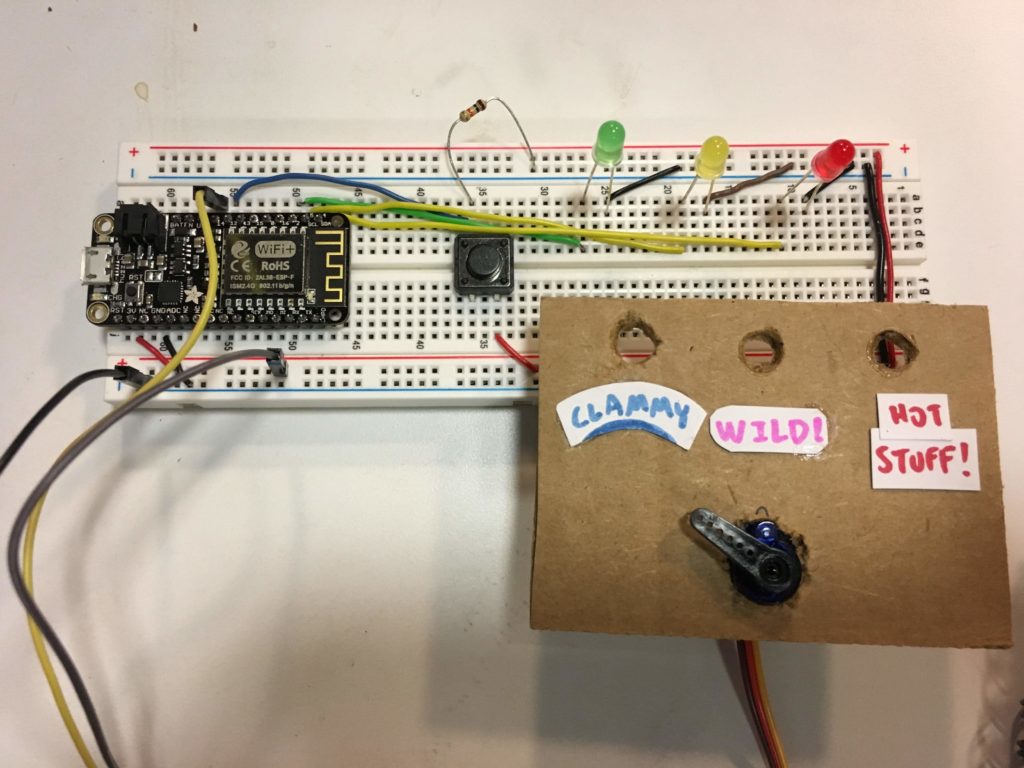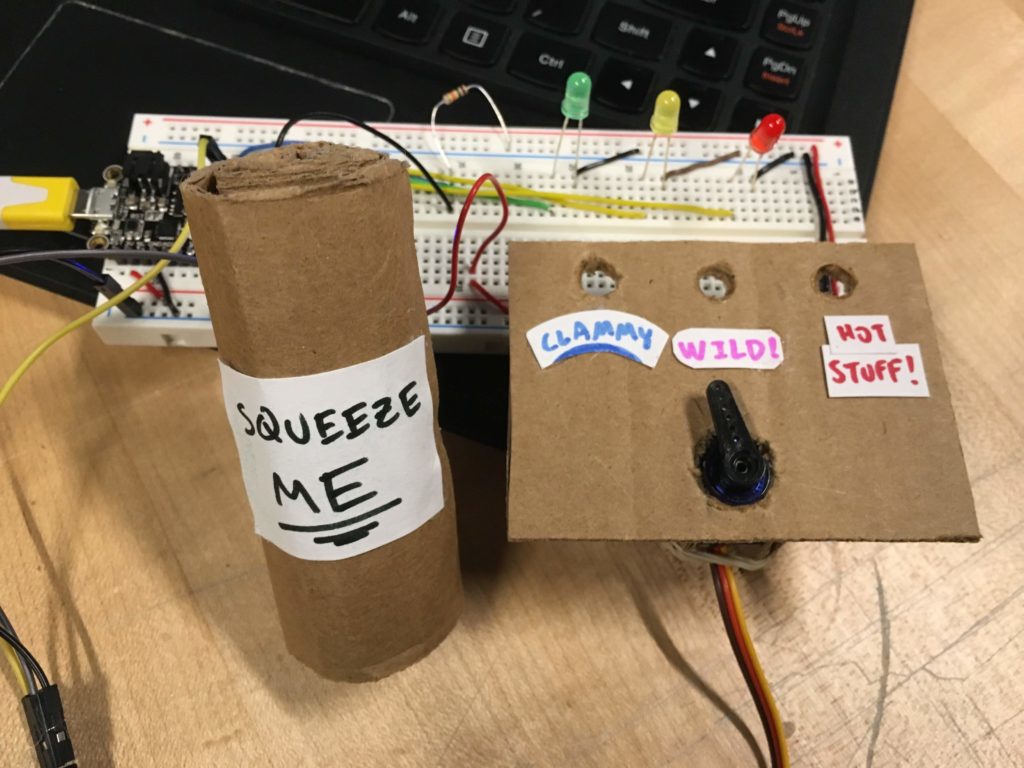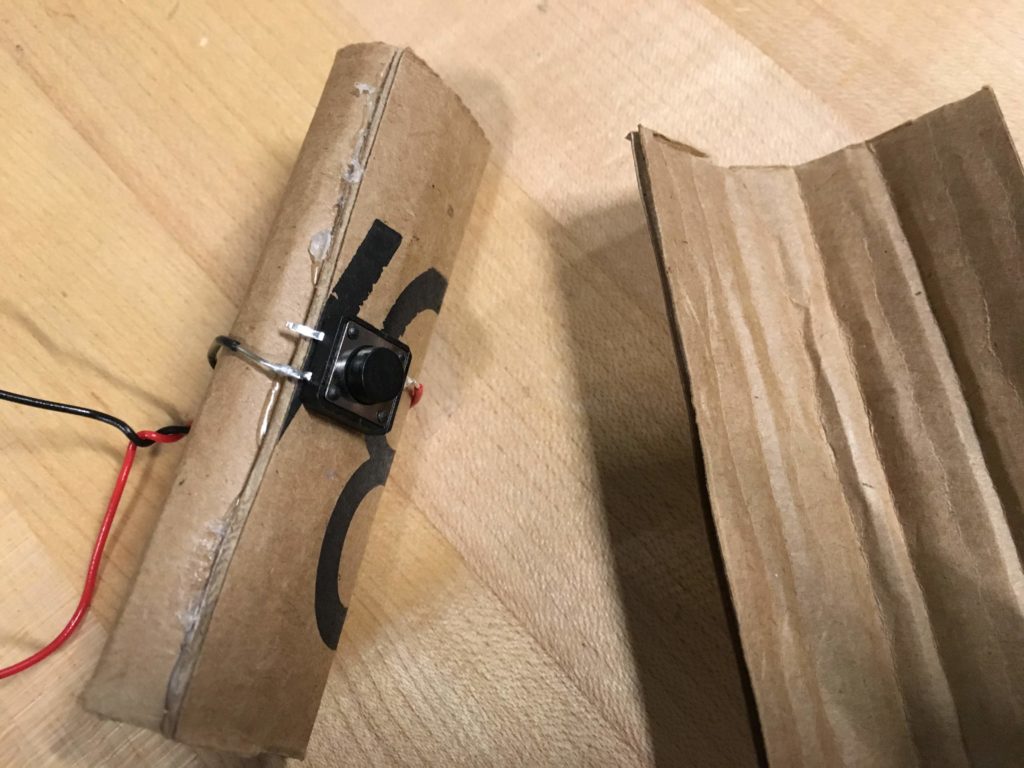Initally, I created my love tester machine with a push button switch as the input, and 3 LEDs and a servo motor as the outputs. When the switch is pushed, the LEDs start blinking erratically while the servo sweeps back and forth, as the machine “decides” the compatibility of the couple. After a few seconds, it settles on an option by swinging its arm in that direction, while the corresponding LED lights up.
After thinking about the readings over the past couple weeks, I decided to iterate on my design. I thought about the Future of Interactive Design Rant, and noticed that the push button didn’t really utilize the full capabilities of our hands. So, I put the button inside a joystick-like thing so that when it’s squeezed, the button is still pushed in the same way, but gives a more interactive feeling to the user since their hands are used in a more natural way.
In this particular design, I think the joystick affords holding or squeezing with the hands, but since it wasn’t too clear, I put a signifier in the form of a sign that says “squeeze me.” This fulfills the role of a signifier by making the affordance of squeezing clearer. I also thought about the information taken in by the user and the information that is sent out by the machine. The tactile input alone has a bandwidth of a million bit/s; the LEDs that light up give out 10,000 bit/s and the sound of the servo turning gives out 100,000 bit/s. And although, consciously we can only perceive a small amount of this information, it’s interesting to see how it flows throughout the system.



